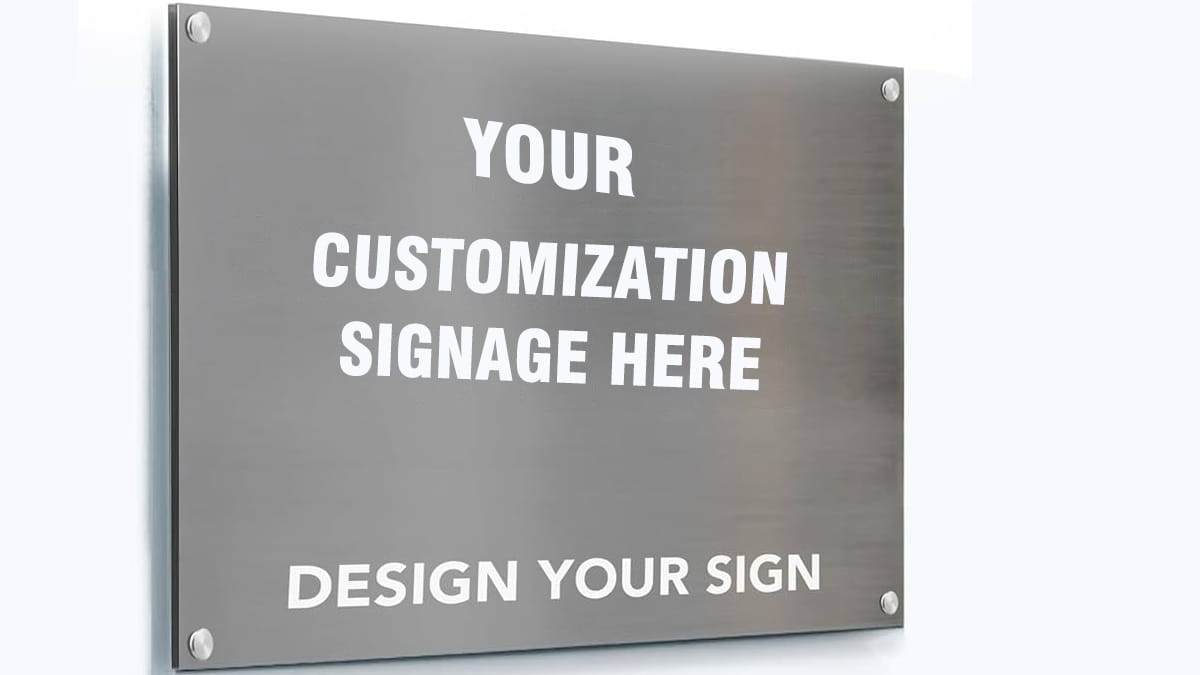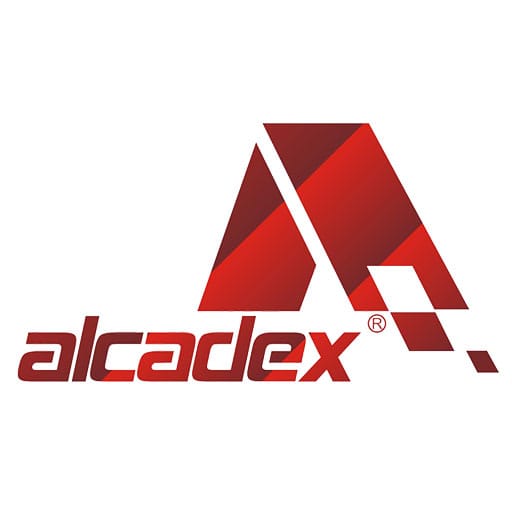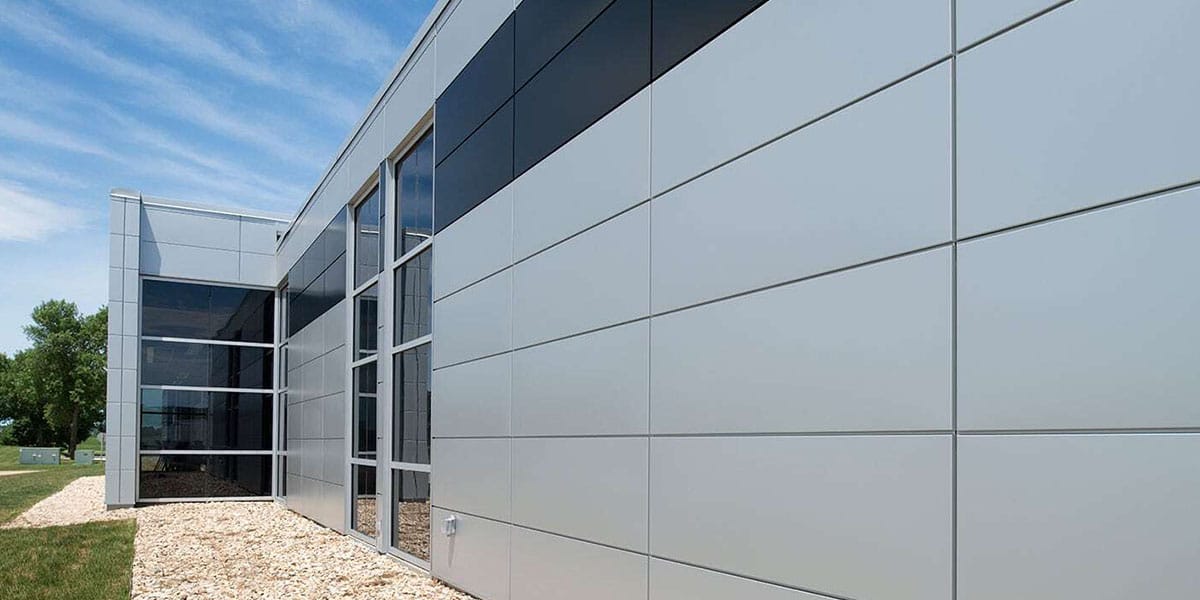
08 Jun What Is Aluminium Composite Panel Signage and How Is It Used
Table of Contents
- 1 Key Takeaways
- 2 What Is Aluminium Composite Panel Signage
- 3 Common Uses
- 4 Aluminum Composite Panels Benefits
- 5 ACP vs. Traditional Signs
- 6 Practical Considerations
- 7 FAQ
- 7.1 What makes aluminium composite panel signage different from regular metal signs?
- 7.2 Can you use aluminium composite panels for both indoor and outdoor signs?
- 7.3 How do you clean and maintain aluminium composite panel signage?
- 7.4 Are aluminium composite panels safe for use in public spaces?
- 7.5 Can you recycle aluminium composite panel signage?
Aluminium composite panel (ACP) signage is a sign made from a flat panel that consists of two thin aluminum sheets bonded to a non-aluminum core, most often polyethylene. Aluminium composite panel signage is commonly seen on shop fronts, building facades, and billboards due to its excellent weather resistance and long-lasting durability. Both businesses and architects prefer aluminium composite panel signage for its smooth finish and versatile design options. The demand for aluminium composite panel signage continues to rise, with the global market expected to grow from $8.2 billion in 2024 to $13.5 billion by 2033.
Metric | Value | Notes |
|---|---|---|
ACP Market Size 2024 | USD 8.2 billion | Source 2 projection |
ACP Market Size 2033 | USD 13.5 billion | Source 2 projection |
CAGR (2026-2033) | 6.1% | Source 2 projection |
Key Takeaways
- Aluminium composite panels combine lightweight aluminum sheets with a strong plastic core, making signs durable and easy to install.
- These panels resist weather, UV rays, and fire, keeping signs bright and safe for both indoor and outdoor use.
- ACP signage offers many design options, including colors, finishes, and shapes, allowing businesses to create eye-catching displays.
- Compared to wood, acrylic, or metal signs, ACP signs last longer, need less maintenance, and stay flat without warping.
- Using aluminium composite panels supports eco-friendly goals by reducing waste and allowing recycling at the end of their life.
What Is Aluminium Composite Panel Signage
Structure and Materials
When you look at acm signage, you see a modern material designed for strength and style. Aluminium composite panel signage uses a sandwich structure. Two thin sheets of aluminum bond to a core made from polyethylene or a fire-retardant material. This core gives the panel its lightweight feel and strong support. The aluminum sheets often have a protective coating, such as polyester or PVDF, which helps them resist weather and wear.
You can find aluminium composite panels in many sizes and thicknesses. Most panels range from 3mm to 6mm thick. Widths can go from 1000mm up to 2000mm, and lengths can reach 5800mm. The aluminum skin itself can be as thin as 0.1mm or as thick as 0.5mm. Manufacturers use different alloys, like 1100, 3003, or 5005, to meet various needs. The core can be standard low-density polyethylene or a fire-retardant grade for extra safety.
Specification Aspect | Details / Options |
|---|---|
3mm, 4mm, 5mm, 6mm | |
Panel Width | 1000mm, 1220mm, 1500mm (customizable up to 2000mm) |
Panel Length | 2440mm, 3200mm, 4000mm, 5800mm (customizable) |
Aluminium Skin Thickness | 0.1mm, 0.12mm, 0.15mm, 0.2mm, 0.3mm, 0.4mm, 0.5mm |
Composite Core | LDPE, Fire Retardant B1 grade, Fire Retardant A2 grade |
Aluminium Alloy | 1100, 3003, 5005 |
Coating Technology | Pre-painted roller coating |
Coating Types | PVDF, FEVE, PE, Anodized, PVC film laminated |
Color Options | Mill finish, metallic, solid, wood grain, stone grain, anodized colors |
This structure makes aluminium composite panel signage a top choice for many projects. The panels stay flat and resist bending or warping. You get a smooth surface that works well for printing graphics or applying vinyl.
Key Features
Aluminium composite panels stand out for their unique mix of properties. You will notice that acm signage is much lighter than solid metal signs. For example, a typical panel weighs about 2.5 pounds per square foot. This low weight makes installation easier and reduces the load on walls or frames.
Despite being light, aluminium composite panel signage remains very rigid. The sandwich design keeps the panel strong and stable. You do not have to worry about bowing or wrinkling, even with large signs. This rigidity helps your signage look professional and last longer.
You also get a smooth, clean surface with aluminium composite panels. This finish allows for sharp, vibrant printing. Many businesses choose acm signage for outdoor displays because the colors stay bright and clear. The panels resist fading from sunlight and damage from rain or wind.
Tip: If you want a sign that stands out and lasts, choose aluminium composite panel signage. You get both style and strength.
Aluminium composite panels offer more than just good looks. Manufacturers keep improving these panels with new features. Some panels now include fire-retardant cores for extra safety. Others use UV-resistant coatings to protect against harsh sunlight. Many companies also use recycled materials to make their panels more eco-friendly.
Here are some key benefits you will find with acm signage:
- Lightweight structure for easy handling and installation
- High rigidity for a flat, stable surface
- Smooth finish for high-quality graphics
- Weather and UV resistance for outdoor use
- Fire-retardant options for added safety
- Wide range of colors and finishes for custom designs
The market for aluminium composite panels keeps growing. In 2023, the market size reached $9.4 billion. Experts expect it to grow to $17.19 billion by 2032, with a 6.8% annual growth rate. Innovations like fire-retardant panels and sustainable materials drive this growth. You can find acm signage in many places, from busy city streets to modern office buildings.
Aluminium composite panel signage gives you a smart solution for both indoor and outdoor signs. You get a product that combines light weight, strength, and a professional look. Whether you need a shop front, a billboard, or a display, aluminium composite panels deliver reliable performance.
Common Uses
Outdoor Signage
You often see aluminium composite panels used for outdoor signage. These panels work well for shop fronts, building facades, billboards, and wall signs. Their weather resistance keeps colors bright and graphics clear, even after years in the sun or rain. Many businesses choose this signage solution because it stays strong and does not fade easily. You can rely on acm signage for fence panel signs, fascia signs, and awning signage. Urban areas and growing cities use aluminium composite panels more often as they build new stores and offices. The panels’ durability and light weight make installation quick and safe.
Note: Aluminium composite panels keep your outdoor signs looking new, even in harsh weather.
Indoor Applications
Aluminium composite panels also fit many indoor uses. You might notice them in store displays, office directories, or wall graphics. Their smooth surface makes them perfect for digital printing and custom designs. Retailers use these panels to create eye-catching displays that attract shoppers. You can also find them in malls, airports, and schools. The panels help you create a modern look without adding much weight to walls or structures. Many architects pick this signage solution for interior cladding and decorative features.
Branding and Displays
If you want your brand to stand out, aluminium composite panels offer many options. You can print high-quality images and logos directly onto the panels. This makes them ideal for signage and advertising in busy areas. Businesses use acm signage for trade show booths, promotional stands, and custom branding displays. The panels support a wide range of colors and finishes, so you can match your brand style. As more companies look for eco-friendly materials, you will find sustainable applications of aluminium composite panels in modern branding projects.
- Aluminium composite panels support both indoor and outdoor environments.
- Their versatility, durability, and design flexibility make them a top choice for many industries.
Aluminum Composite Panels Benefits
 Durability and Weather Resistance
Durability and Weather Resistance
When you choose aluminium composite panels for signage, you get materials built to last. These panels resist corrosion and shocks, so your signs stay strong even in tough weather. Researchers have tested them by firing ice balls at high speeds to mimic hailstorms. The panels absorbed the impact and showed only small dents, proving their toughness. Special coatings protect the surface from UV rays and rain, so colors stay bright for years. You can trust aluminium composite panels to handle sun, wind, and rain without fading or warping.
Tip: If you want your sign to look new for a long time, aluminium composite panels are a smart choice.
Easy Installation
Aluminium composite panels make installation simple and fast. Their lightweight design means you can carry and lift them with less effort. You need fewer workers, which saves money on labor. You can cut, drill, or bend these panels easily, so you can fit them into many shapes and sizes. Many installers use simple tools and quick joining methods, like screws or adhesives. This flexibility helps you finish projects faster and reduces setup time compared to heavier materials.
Design Flexibility
You have many options when you use aluminium composite panels for your signs. You can pick from a wide range of colors, textures, and finishes. Some panels even have special coatings that change color in the light. You can shape them into curves or custom forms to match your brand or building style. New technology lets you add smart features, like solar panels or sensors, to your signage. The ability to customize both the look and performance is one of the biggest advantages of using aluminium composite panels.
- Choose from glossy, matte, metallic, or wood-grain finishes.
- Add fire-retardant or eco-friendly cores for extra safety or sustainability.
- Use digital printing for sharp logos and graphics.
Cost-Effectiveness
Aluminium composite panels help you save money in several ways. Their light weight lowers shipping and handling costs. You spend less on labor because installation is quick and easy. The panels last a long time, so you do not need to replace them often. They also provide good insulation, which can help reduce energy bills for buildings. Many panels use recycled materials, making them a smart choice for the environment and your budget. As more cities and companies look for eco-friendly solutions, aluminium composite panels become even more popular.
ACP vs. Traditional Signs
Material Comparison
When you choose signage, you often compare ACP with traditional materials like wood, acrylic, or solid metal. ACP uses two thin aluminum sheets with a plastic core. This design makes the panel light and strong. Wood signs feel heavier and can warp over time. Acrylic signs look glossy but break easily if dropped. Solid metal signs resist impact but weigh much more than ACP.
Material | Weight | Weather Resistance | Flexibility | Maintenance |
|---|---|---|---|---|
ACP | Light | High | High | Low |
Wood | Heavy | Low | Low | High |
Acrylic | Medium | Medium | Medium | Medium |
Solid Metal | Very Heavy | High | Low | Medium |
Tip: If you want a sign that is easy to move and install, ACP is a smart choice.
Performance
You want your sign to last and look good. ACP panels resist rust, rot, and fading. You can use them outdoors for years. Wood signs absorb water and may crack or peel. Acrylic signs lose color in sunlight. Solid metal signs last long but may dent or scratch.
ACP panels also handle temperature changes well. They do not expand or shrink much. You can clean them with simple soap and water. Wood needs sealing and repainting. Acrylic scratches easily. Metal signs may need polishing.
ACP signs stay flat and smooth.
Traditional signs may warp, crack, or fade.
Visual Impact
You want your sign to stand out. ACP gives you many color and finish options. You can choose glossy, matte, metallic, or even wood grain looks. Printing on ACP creates sharp images and bright colors. Wood signs give a classic look but limit your color choices. Acrylic signs look shiny but may show fingerprints. Metal signs look strong but offer fewer design options.
ACP signage helps your business look modern and professional. You can match your brand colors and create eye-catching displays.
Practical Considerations
 Maintenance
Maintenance
You want your signage to look great for years without spending too much time or money on upkeep. Aluminium composite panels (ACPs) make this easy. You only need to clean them with mild soap and water to remove dust or dirt. You do not have to paint or seal them like wood signs. The special coatings on ACPs protect against rust, fading, and stains.
Here is a quick comparison of maintenance needs for common signage materials:
Material | Maintenance Level | Typical Upkeep Tasks | Lifespan (Years) |
|---|---|---|---|
Wood | High | Painting, sealing | 10–20 |
Steel | High | Rust prevention, repainting | 15–30 |
Solid Aluminum | Low–Moderate | Occasional cleaning | 30–50 |
ACP | Low | Simple cleaning |
You save money over time because ACPs resist weather and UV rays. Their lightweight design also means you spend less on installation and repairs.
Customization
You can create almost any look with aluminium composite panels. Choose from many colors, finishes, and textures. You can print sharp images, logos, or text directly onto the panels. Some panels even mimic wood or stone for a unique style.
Shape panels into curves or custom forms.
Select glossy, matte, or metallic finishes.
Add special coatings for extra protection.
This flexibility helps you match your brand or building style. You can update your signage easily if your business changes its look.
Tip: Custom ACP signage helps your business stand out and attract more attention.
Eco-Friendliness
You help the environment when you choose ACP signage. Aluminium panels last a long time, so you replace them less often. Recycling plays a big role in reducing environmental impacts. When you recycle ACPs at the end of their life, you cut global warming potential by up to 38% and lower acidification and ozone depletion by over 40%. Well-maintained aluminum products also show a 52% reduction in global warming potential compared to less durable options.
PVC and wood signs often need more maintenance and do not recycle as easily. ACPs use recycled materials and support green building goals. By choosing ACPs, you support a cleaner planet and reduce waste.
Aluminium composite panel signage gives you a smart solution for modern signs. You get durability, versatility, and a professional look. Many businesses choose ACPs because they last long and look great in any setting.
The global ACP market is set to grow from $7.85 billion in 2024 to over $12.44 billion by 2031, showing strong demand.
ACPs offer lightweight strength, weather resistance, and easy customization.
Advanced coatings keep colors bright and reduce maintenance.
Consider ACP signage for your next project if you want reliable and eye-catching results.
FAQ
What makes aluminium composite panel signage different from regular metal signs?
You get a lightweight sign that stays strong and flat. The panel uses two thin aluminum sheets with a plastic core. This design resists bending and keeps your graphics looking sharp.
Can you use aluminium composite panels for both indoor and outdoor signs?
Yes, you can use these panels inside stores or outside on buildings. The panels resist weather, sunlight, and moisture. Your sign will last a long time in many environments.
How do you clean and maintain aluminium composite panel signage?
You only need mild soap and water. Wipe the surface with a soft cloth. Avoid harsh chemicals or rough sponges. Your sign will stay bright and clean with little effort.
Are aluminium composite panels safe for use in public spaces?
Many panels come with fire-retardant cores. You can choose these for extra safety in schools, malls, or offices. Always check the product label for fire ratings.
Can you recycle aluminium composite panel signage?
Yes, you can recycle most aluminium composite panels. Many manufacturers use recycled materials. When your sign reaches the end of its life, take it to a recycling center.



 Durability and Weather Resistance
Durability and Weather Resistance Maintenance
Maintenance